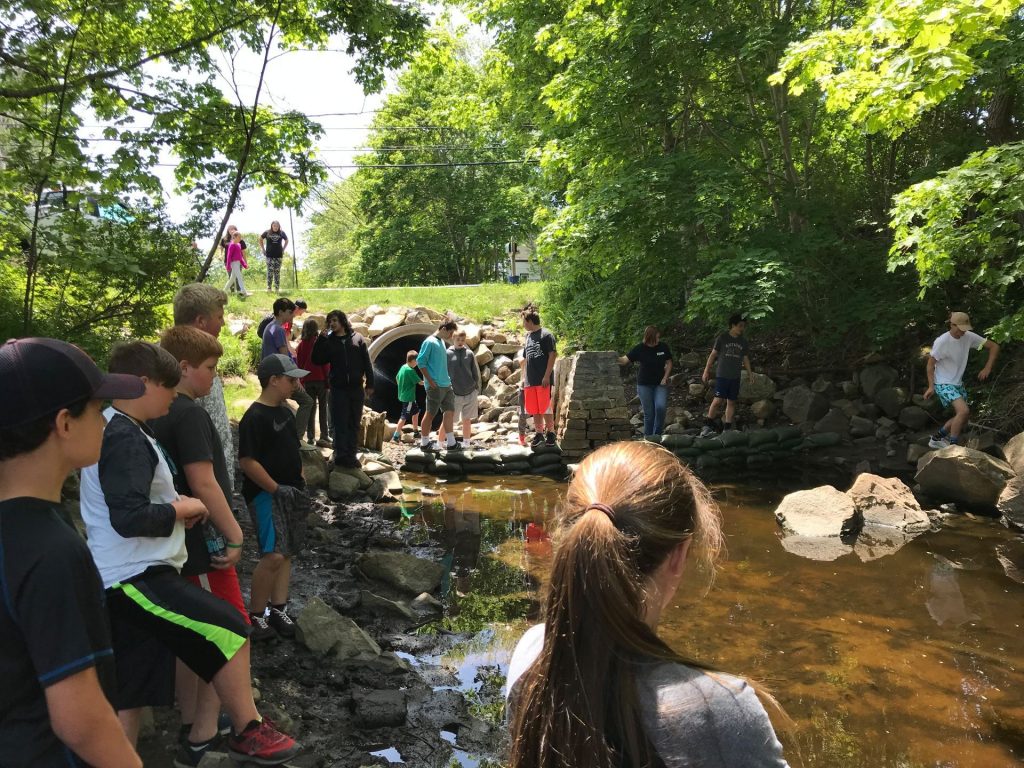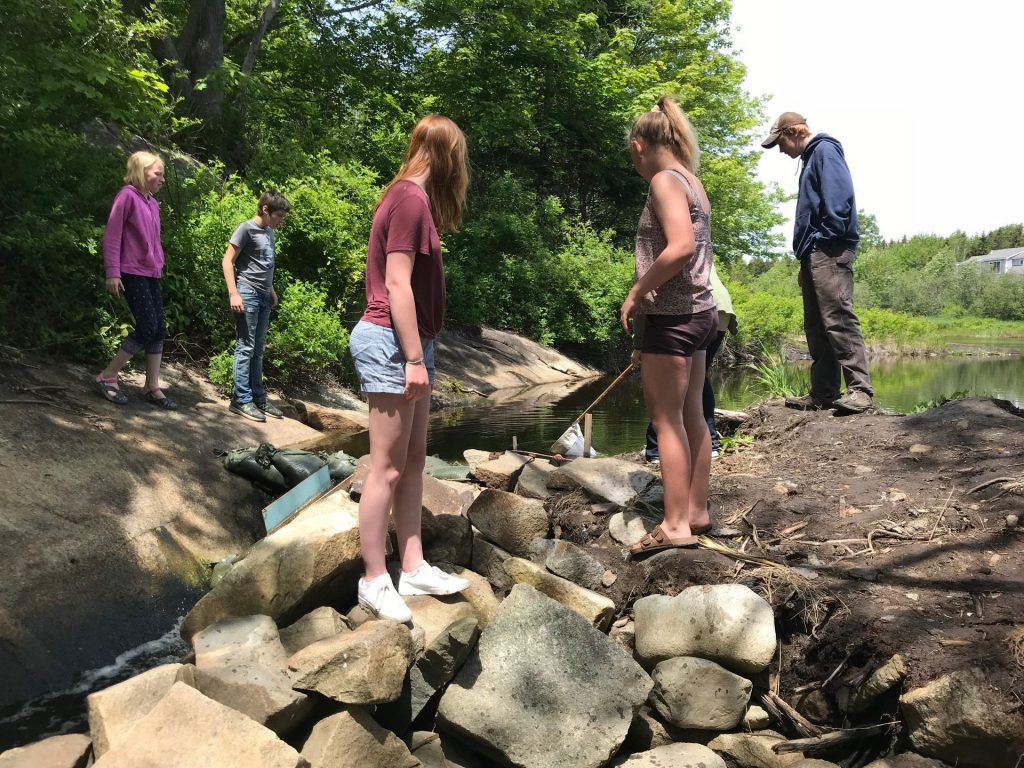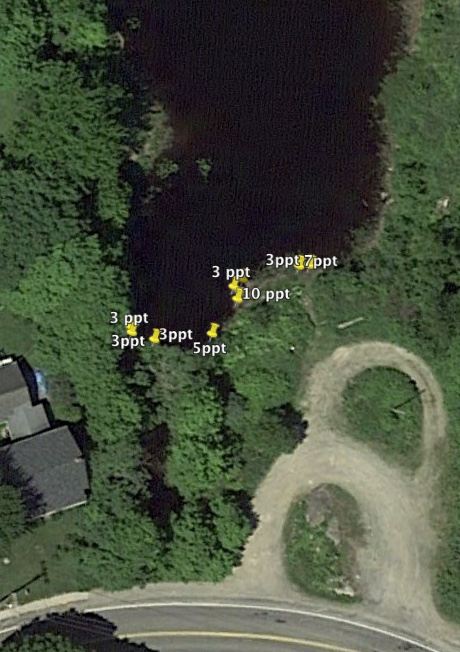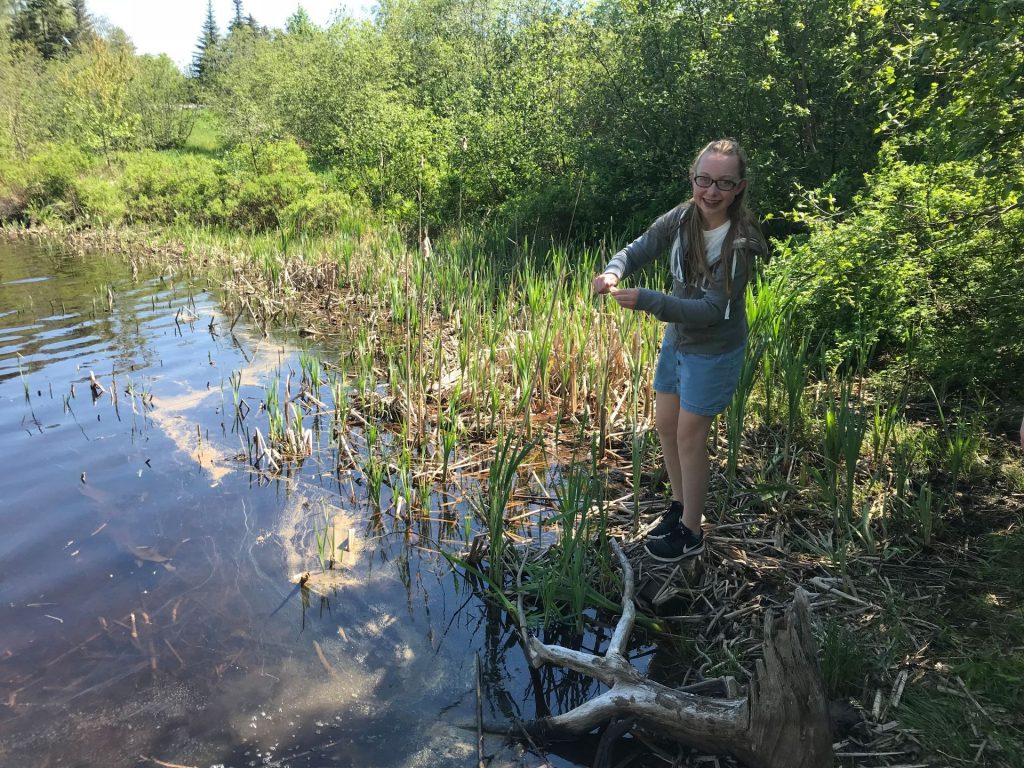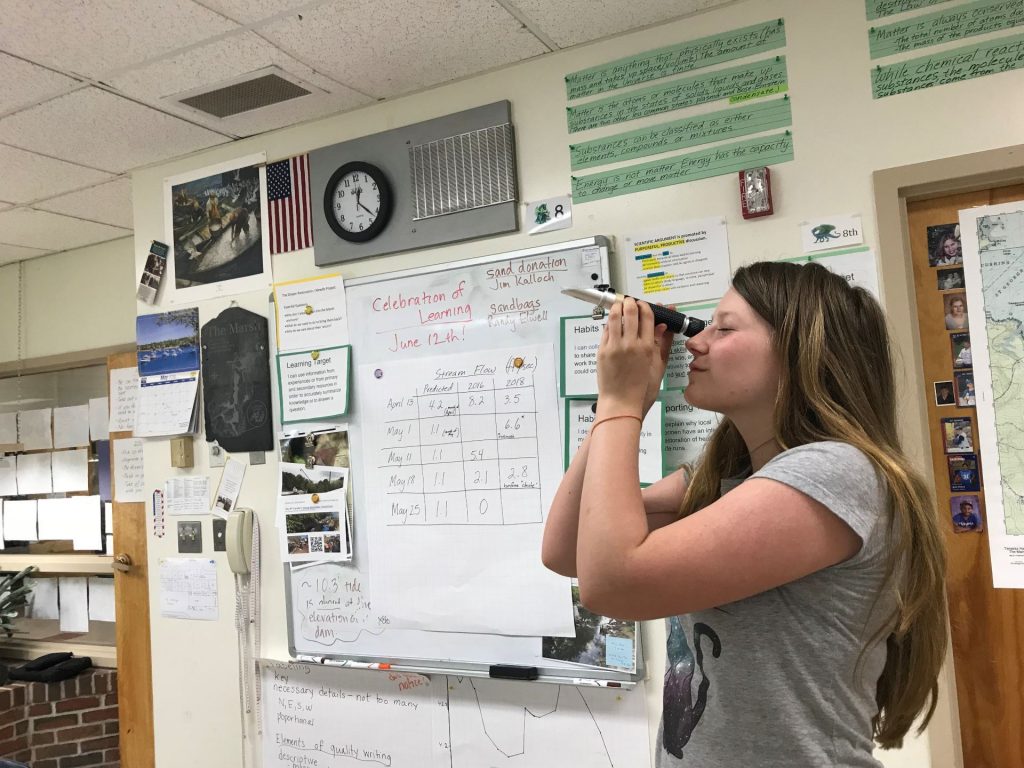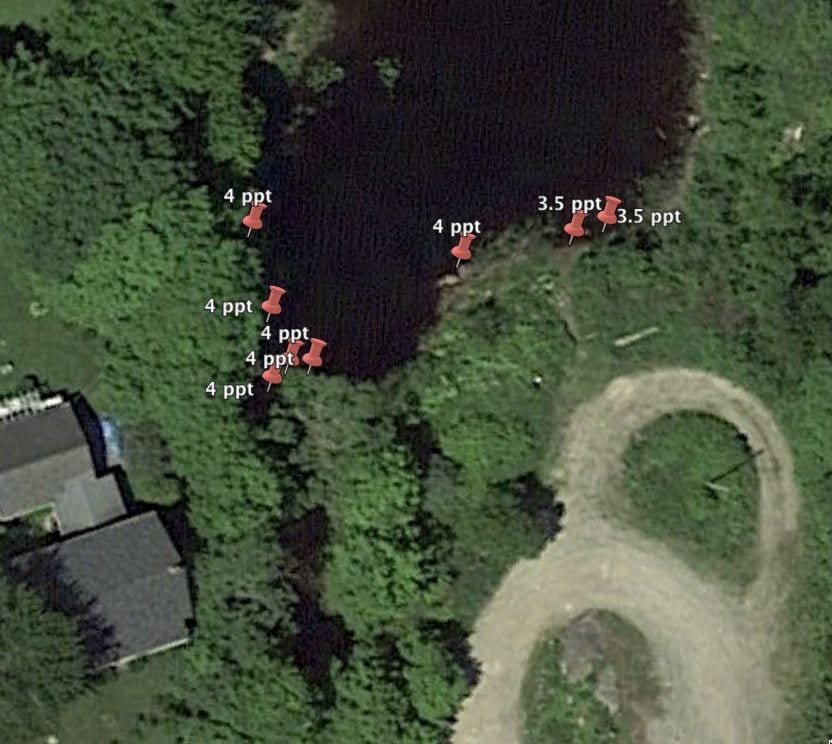
As of June 12th, we can confirm that two alewives are in the marsh. They were spotted in the culvert the evening of June 11th, and netted at midday on June 12th, and placed in the marsh, thanks to the efforts of the students in both grades 7 and 8. They were in the stream, circling and running up to the base of the installed “slide”, but did not have the aid of the tide that day to help them over. Water flowing out of the marsh was minimal and could not help them over. This date is much later than two years ago, when we observed several groups of fish over the couple days starting May 25th, 2016.
The bigger tides of the month that bring water directly in the marsh are tides greater than 10.3 feet (see our post on June 3rd). These tides were just after the appearance of these two alewives. The flooding tides occurred on the night of June 12th and continued through June 19th, with at least one flooding tide per day.
Our salinity sampling (see image above) took place on June 14th, after an 11.7 foot tide at 11:17 pm the night before. Our sampling should reflect the influence of this tide, at a time when alewife eggs may be present in the marsh.

